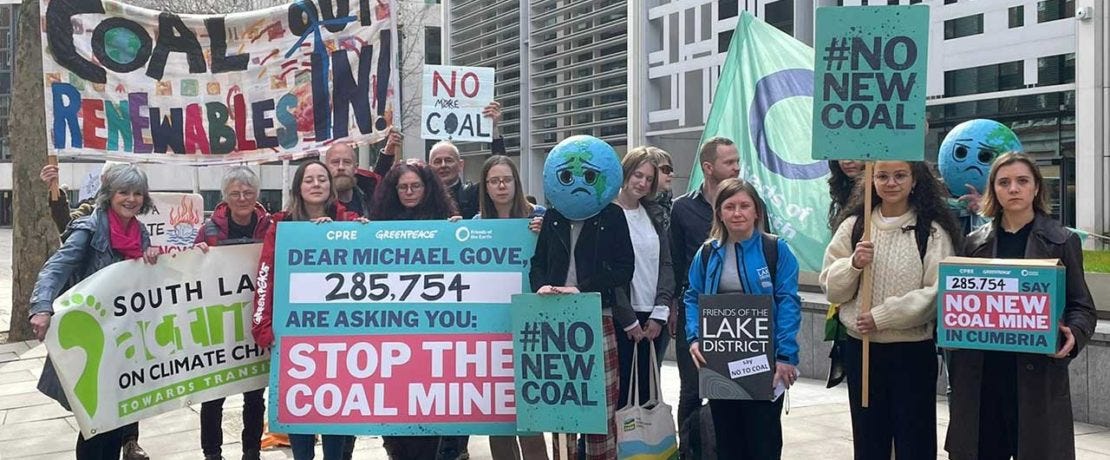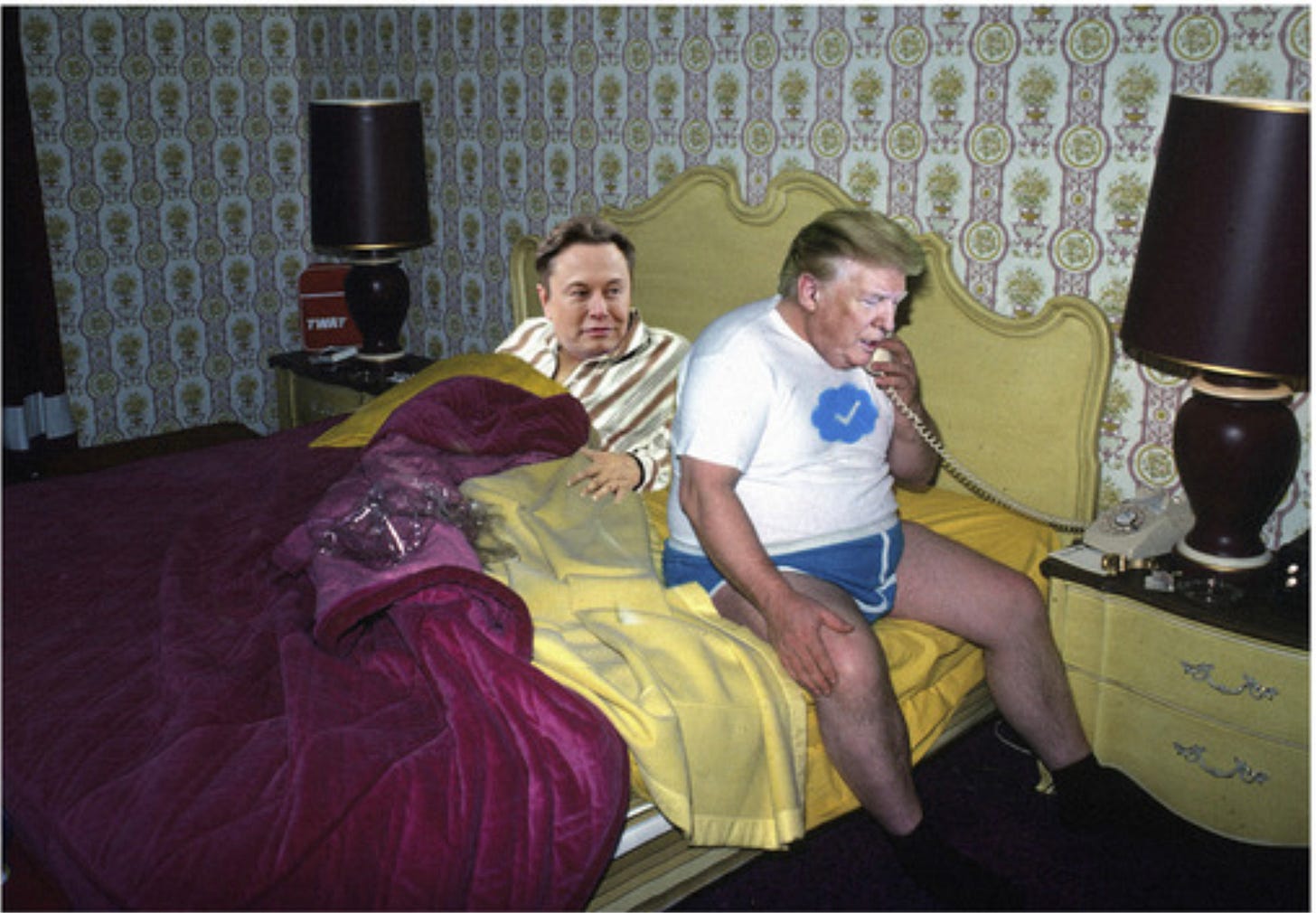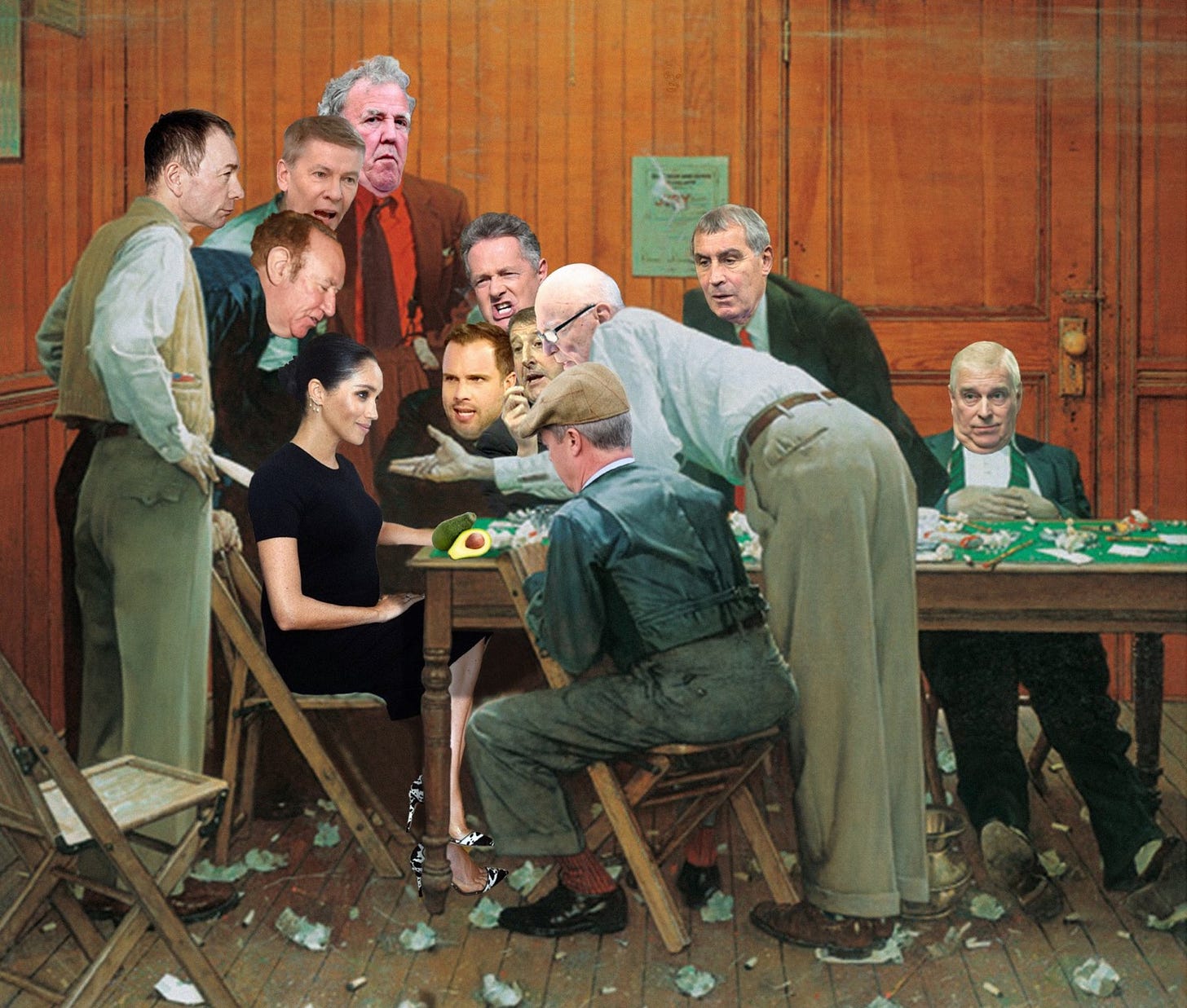19 December 2022. Coal and steel | Satire
The strange case of the Cumbrian coal mine and the path to green steel // The year according to Cold War Steve.
Welcome to Just Two Things, which I try to publish three days a week. Some links may also appear on my blog from time to time. Links to the main articles are in cross-heads as well as the story. A reminder that if you don’t see Just Two Things in your inbox, it might have been routed to your spam filter. Comments are open.
1: The strange case of the Cumbrian coal mine and the path to green steel
One of the British government’s most controversial recent decisions has been to approve the opening of a new coal mine in north-west England. The rationale, such as it is, is that steel companies are going to continue to use coal for the time being and they might as well buy it from Britain. And that because the mine will close in 2049 it won’t affect Britain’s legal obligations to reach net zero by 2050.
Obviously, if you are concerned about climate change, you think most of this is morally and practically indefensible. You might also be concerned that it wrecks any modest claims that Britain might still have to leadership in the fight against climate change, and makes another hole in Britain’s soft power (although no-one in government cares about this or even knows what it is these days).
(Campaigners from Cumbria gather with staff from CPRE, Greenpeace and Friends of the Earth to hand in a petition against the mine. Photo: © Greenpeace.)
Without getting too far into the Lilliputian world of British parliamentary politics, there’s also more than a suggestion that the new Prime Minister has thrown the decision as a big juicy bone to the hard right of his Parliamentary party so that he could also reverse a decision banning onshore wind turbines, which are likely necessary for Britain to manage en effective transition to renewables.
The leftish All The Is Solid blog also uses the decision to explore the infatuation that the Conservative Party has with the fossil fuels sector, which runs deep through its worldview.
I’m not going to spend any more time on these arguments here today.
Instead: On his excellent Carbon Commentary blog, the sustainability analyst Chris Goodall takes another route into this decision. He decides to test the assumptions made, and stated, in justifying the decision with actually existing evidence. The result is illuminating.
Goodall starts by comparing two statements made on the same day, 7th December. One is the government’s lengthy (400 page) document on the decision, the other a presentation by the head of government affairs and climate change at Arcelor Mittal, one of Europe’s largest steelmakers. (The government document is here: the Secretary of State’s decision is summarised in planning-related language in the first 16 pages.)
I’ll let the government go first, in Goodall’s account:
Its principal justification was that Europe’s steel sector would continue to need large amounts of this type of coal for many decades to come. The government’s 400 page decision further said that decarbonisation of the industry, if it occurs at all, will be made possible by the use of carbon capture and storage. Hydrogen steel-making is not, and will not be, a financially viable way of making steel, said London.
And now Stephen Tondo, of Arcelor Mittal, again in Goodall’s version:
(His) presentation... included the following statement: ‘By 2030, most of EU’s steel production will be decarbonized’. Tondo also asserted that over half of the 90 million tonnes a year of European steel made in blast furnaces today would switch to a process using hydrogen and electric arc furnaces by that date. This will reduce the demand for metallurgical (coking) coal by a similar percentage.
Clearly both of these statements can’t both be correct. Goodall decides to look at the available evidence, based on published statements about the future on steelmaking, under three headings:
the published intentions of the owners of each of the 27 operating blast furnace sites in the European Union and the UK. I show that all but four of these sites have stated a strategy of switching away from using coal to using hydrogen or increasing the use of electric arc furnaces.
Second, I add up the expected capacity of the direct reduction plants in the cases where the company has provided an estimate of expected size. I do this to compare the operators’ plans with the UK government’s estimate that, at most, the European steel industry will have switched 10 million tonnes of output from coal to hydrogen by 2030. I show that the government’s figure is a gross underestimate.
Third, I list the published decarbonisation commitments of the main European steel makers. Typically, they have promised to reduce their emissions footprint by 30% by 2030.
It’s a long article with an impressive amount of detail in it. (I have saved it for the next time someone asks me about how decarbonising the steel sector is going.)
But the detail essentially demonstrates a wide gap between the British government’s assumptions about the future of decarbonising steel and those of the operators themselves.
Notably, this gap is driven by two assumptions. The first is that, as stated above, neither hydrogen not clean electric will be a cost-effective way of making steel any time soon. The second is that Carbon Capture and Storage (CCS) will soon be a viable way of managing steelmaking related emissions.
There are 27 blast furnace sites in Europe and Britain, and almost all of these have published their decarbonisation plans. So it is possible to assess their intentions:
Of these 27 sites, 15 have indicated an intention to build direct reduction furnaces using hydrogen and 15 have said they will invest in electric arc furnaces. Seven are indicating they will have both types of steel-making at these locations. This is logical; a direct reduction plant using hydrogen needs to an electric arc furnace to turn the iron into steel.
In contrast:
(O)nly one of these 27 sites has started to invest in any form of carbon capture. Arcelor Mittal’s site at Gent/Ghent in Belgium is experimenting with converting flue gas to ethanol using the Lanzatech process. Arcelor Mittal tells us that the maximum saving of emissions from the ethanol production is about 125,000 tonnes a year, which represents between one and two percent of the site’s total emissions. The UK government’s faith in large-scale CCS for the steel sector is at variance with almost all opinion within the industry.
There’s a couple of related points here: the first is that the government’s assumptions about the proportion of the steel sector that can be decarbonised is way out. Two fifths of steel is already made by electric arc, which would be decarbonised by changing the energy supply to renewable electricity.
The second—he touches on this point only lightly—is that much of the demand for European steel is driven by car-makers, who also have targets to meet in terms of decarbonising their supply chain. The steel companies are, in other words, being leaned on by their customers to get a move on.
It is possible that the steel-making won’t be able to move as fast as they want to. Hydrogen might take longer to be proved as a technology. Carbon capture and storage will fill the gap. In brief, that’s the government’s justification.
All the same, the publicly available evidence isn’t with them:
Almost all large EU steelmakers have released plans for moving to hydrogen DRI, either partly or in entirety. DRI is a well-understood technology that is widely used already, usually for making steel in smaller quantities. Currently DRI furnaces use natural gas, not hydrogen, but companies and their investors are confident that the fuel can be switched... CCS technology is far less well established than DRI. CO2 capture at blast furnaces is widely seen in the industry to be difficult and costly.
This lack of reference to publicly available evidence is probably an example of “policy driven evidence”, which focuses on building a case in support of a preferred decision. As Goodall notes:
the UK government and its agencies has taken a decision without any research into trends in the rest of Europe.
But there’s also a futures note here. There may not be ‘future facts’, although that’s a discussion for another time. But the combination of actors’ stated intentions, the maturity, compatibility and cost-curves of relevant technologies, and the networks that actors are embedded in, can give you a pretty good idea of the direction of travel. As Goodall demonstrates in his analysis here.
He’s pretty confident that the mine won’t go ahead, for market reasons if not ethical ones. I think he’s right.
2: The year according to Cold War Steve
The first time you do something it’s innovation, the second time it is tradition. So here is, according to Just Two Things tradition a selection of images by the satirical British collage artist Cold War Steve, looking back at some of the events of 2022 as we run towards the end of the year.
If you want to know more about Cold War Steve, you can catch up with him in Just Two Things this time last year.
All these images are (c) Cold War Steve: some can be bought from his shop, along with other merch.
(In the Channel. © Cold War Steve).
(Elon Musk, Donald Trump, and Twitter. © Cold War Steve).
(Harry and Meghan’s media circus. © Cold War Steve—a pastiche of Norman Rockwell’s illustration The Holdout)
(The just concluded World Cup in Qatar. © Cold War Steve)
There’s also a short film about his work (5 minutes), on the National Galleries of Scotland site, from three years ago, when he took his work on tour:
Other writing: midwinter folk music
I have a piece over at the Salut Live blog on seasonal music and the folk tradition, including songs the emerged before the Victorians sentimentalised Christmas and Tin Pan Alley and the music charts doubled down on this. Here’s an extract:
There are three kinds of songs that fit into this. The first is the seasonal songs that are about the coldest time of the year, with very little to do with the religious aspects of the holiday. Then there are the carols and associated songs that predate the sentimental and pious Victorian carols.
And then there are the modern songs that try to capture the mixed feelings about this time of the year.
The word “wassail” crops up a lot in those seasonal songs that are indifferent to to the Christian aspects of the deep midwinter. Wassail is an archaic English word meaning “spiced ale or mulled wine drunk during celebrations for Twelfth Night and Christmas Eve”. Wassailing is the verb for doing this.
The article comes with a playlist. I assume it’s red because of the season:
j2t#408
If you are enjoying Just Two Things, please do send it on to a friend or colleague.







